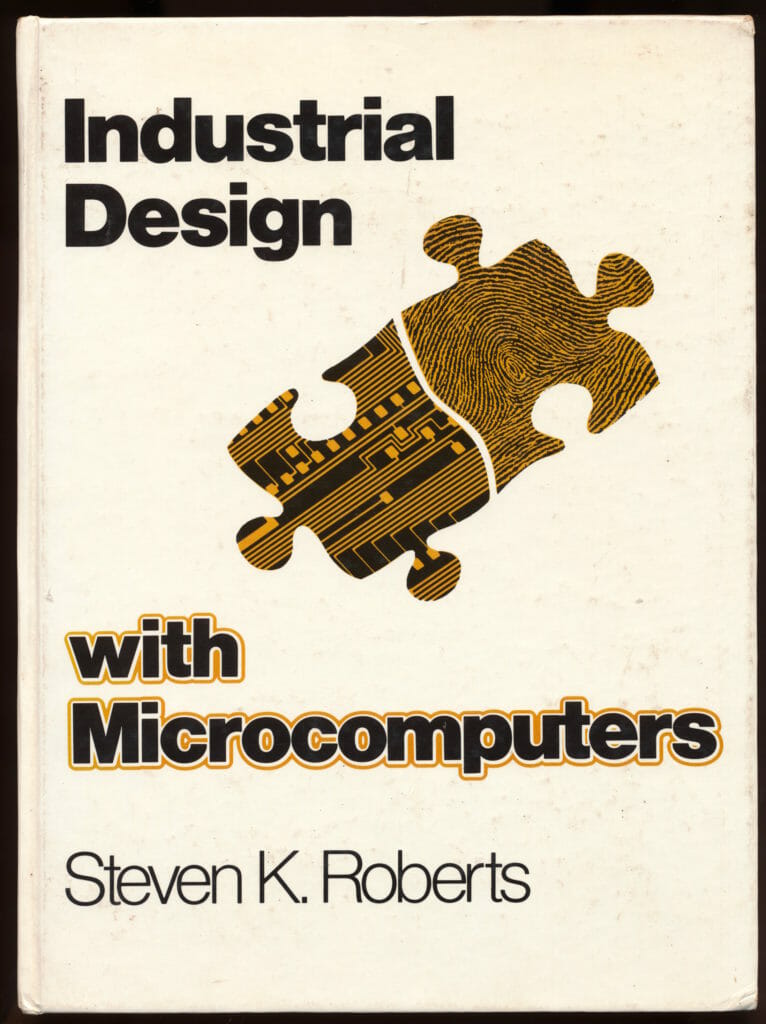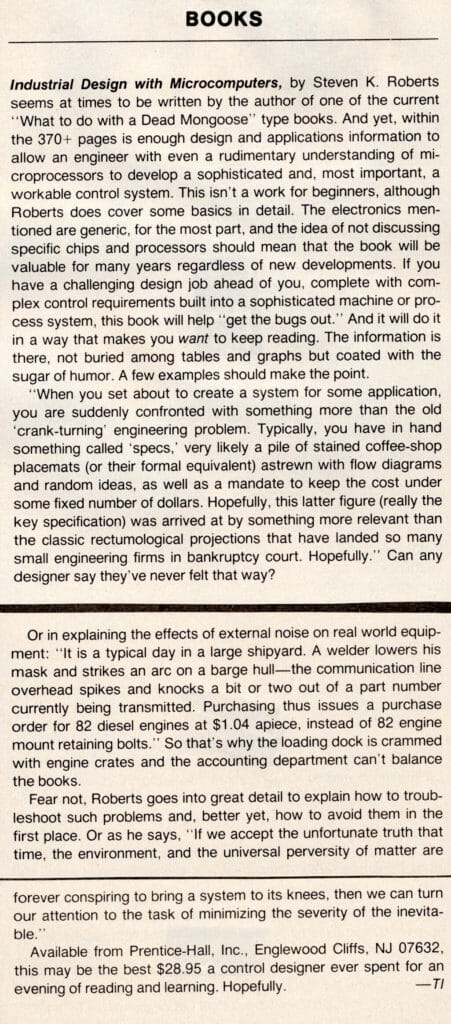
Assembly Engineering Review – Industrial Design with Microcomputers
Long out of print, this book was my first serious large-scale work… a full-size textbook published by Prentice-Hall, focused on industrial control system engineering. It encapsulated much of my twenties (back in the 1970s), when I was doing embedded factory automation and control systems on a consulting basis. It is not a normal textbook, and the reviews often picked up on that fact…
Industrial Design with Microcomputers, by Steven K. Roberts, seems at times to be written by the author of one of the current “What to do with a Dead Mongoose” type books. And yet, within the 370+ pages is enough design and applications information to allow an engineer with even a rudimentary understanding of microprocessors to develop a sophisticated and, most important, a workable control system. This isn’t a work for beginners, although Roberts does cover some basics in detail. The electronics mentioned are generic, for the most part, and the idea of not discussing specific chips and processors should mean that the book will be valuable for many years regardless of new developments. If you have a challenging design job ahead of you, complete with complex control requirements built into a sophisticated machine or process system, this book will help “get the bugs out.” And it will do it in a way that makes you want to keep reading. The information is there, not buried among tables and graphs but coated with the sugar of humor. A few examples should make the point.
“When you set about to create a system for some application, you are suddenly confronted with something more than the old ‘crank-turning’ engineering problem. Typically, you have in hand something called ‘specs,’ very likely a pile of stained coffee-shop placemats (or their formal equivalent) astrewn with flow diagrams and random ideas, as well as a mandate to keep the cost under some fixed number of dollars. Hopefully, this latter figure (really the key specification) was arrived at by something more relevant than the classic rectumological projections that have landed so many small engineering firms in bankruptcy court. Hopefully.” Can any designer say they’ve never felt that way?
Or in explaining the effects of external noise on real world equipment: “It is a typical day in a large shipyard. A welder lowers his mask and strikes an arc on a barge hull—the communication line overhead spikes and knocks a bit or two out of a part number currently being transmitted. Purchasing thus issues a purchase order for 82 diesel engines at $1.04 apiece, instead of 82 engine mount retaining bolts.” So that’s why the loading dock is crammed with engine crates and the accounting department can’t balance the books.
Fear not, Roberts goes into great detail to explain how to troubleshoot such problems and, better yet, how to avoid them in the first place. Or as he says, “If we accept the unfortunate truth that time, the environment, and the universal perversity of matter are forever conspiring to bring a system to its knees, then we can turn our attention to the task of minimizing the severity of the inevitable.”
Available from Prentice-Hall, Inc., Englewood Cliffs, NJ 07632, this may be the best $28.95 a control designer ever spent for an evening of reading and learning. Hopefully.
Another delightful review of Industrial Design with Microcomputers is over here.




You must be logged in to post a comment.